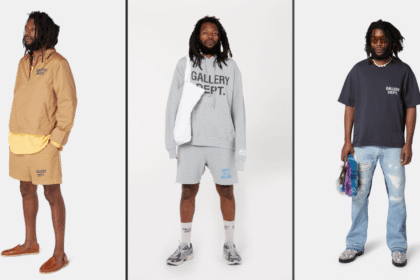In 2025, AI fashion privacy has evolved from an afterthought to a cornerstone of ethical fashion tech. As artificial intelligence revolutionizes the way we shop—offering personalized style suggestions, virtual try-ons, and AI-powered wardrobe planning—it does so by harvesting an immense amount of personal data.
While the upside of AI in fashion is clear—efficiency, convenience, and hyper-personalization—the tradeoff is often our privacy. Platforms tap into sensitive biometric information, track user behaviors, and collect detailed personal identifiers to deliver tailored recommendations. As these technologies become the norm, the conversation around data privacy is becoming urgent.
In this blog, we’ll explore what kind of data AI fashion systems collect, where it goes, and what happens if it falls into the wrong hands. We’ll also discuss regulations, ethical obligations, and emerging technologies that aim to protect users while keeping innovation alive.
The Data Dilemma: What AI Collects
At the core of every AI fashion system is data. These platforms rely on deep learning models that improve as they ingest more detailed consumer profiles. To build these profiles, they collect a wide range of personal information.
Categories of Data Collected:
- Personal Identifiers: Name, age, email, location, and device ID.
- Behavioral Data: Website and app navigation, clicks, search terms, and time spent on fashion items.
- Purchase Records: What users buy, how often they shop, what they return, and which brands they prefer.
- Body Metrics: Waist size, shoulder width, inseam, and other measurements either input manually or captured using camera-based scanning tools.
- Biometric Information: Facial geometry from virtual try-ons, walking style from AI fitting rooms, and posture analysis.
- Psychographic Data: Inferred mood and preferences based on interactions, reviews, or sentiment-driven feedback.
AI models use this layered data to offer eerily accurate style recommendations—but the very precision of these recommendations reveals just how much these systems know about us.
Key Privacy Risks in AI Fashion
1. Informed Consent and Transparency
One of the foundational pillars of AI fashion privacy is user consent. Unfortunately, most users unknowingly give it away.
Long-winded privacy policies written in legal jargon often hide how data is really used. Many users tap “agree” without realizing they’re allowing brands to scan their faces, analyze their posture, or infer mood from their interactions. Without transparent consent frameworks, users are left in the dark, unaware of how extensively their information is being mined.
2. Data Sharing with Third Parties
To refine AI models or scale capabilities, fashion brands often collaborate with third-party vendors—analytics firms, cloud providers, and marketing agencies. While outsourcing boosts performance, it fragments accountability.
When data is shared across multiple players, users rarely know where their information ends up. Even if the original brand is trustworthy, its partners may not follow the same rigorous privacy standards. This murky data supply chain makes privacy breaches more likely and harder to trace.
3. Data Storage and Security
Storing vast quantities of biometric and behavioral data demands enterprise-level cybersecurity. Unfortunately, fashion platforms aren’t always tech-first companies—and that can leave gaps.
Security essentials include:
- Encryption in Transit and at Rest: Data must be encrypted when stored and while moving between systems.
- Strict Access Controls: Not every employee needs access to user data. Role-based permissions are essential.
- Frequent Security Audits: Regular internal checks and third-party penetration testing can catch vulnerabilities early.
A single breach involving facial scans or body metrics could be more damaging than leaking email addresses. Biometric data can’t be changed like a password.
4. Algorithmic Bias and Discrimination
AI systems are only as fair as the data they’re trained on. If that training data skews toward certain body types, ethnicities, or income brackets, the algorithm will reflect those biases.
This could mean suggesting trendier or more luxurious outfits only to users with high-value shopping histories—or ignoring plus-size or gender-neutral clothing altogether. AI fashion privacy isn’t just about data protection—it’s also about equity and fairness.
Fashion brands must actively audit their algorithms, diversify their datasets, and test for bias regularly to ensure inclusivity across the board.
5. Identity and IP Concerns
Virtual avatars and digital fitting rooms have blurred the lines between fashion and identity.
Issues include:
- Misappropriation of Likeness: If an avatar closely mirrors a real individual without consent, it could open brands to legal action.
- Copyright Breaches: Training AI on copyrighted clothing images without permission could violate intellectual property laws.
Protecting user identity, while also safeguarding intellectual property, is a delicate balancing act that every fashion tech company must get right.
Navigating the Legal and Ethical Landscape
Global Data Protection Regulations
Different countries have their own rules, and brands operating internationally must comply across jurisdictions.
- GDPR (Europe): Requires explicit consent, purpose limitation, and user rights to access or delete data.
- CCPA (California): Offers the right to know what’s collected and the ability to opt out of data sales.
- PIPEDA (Canada) & LGPD (Brazil): Similar laws centered on consent, transparency, and security.
Fines can be steep. GDPR violations may cost up to 4% of annual global turnover, while the CCPA levies up to $7,500 per intentional breach.
Best Practices for Ethical AI Fashion
Compliance is just the beginning. Ethical brands go further by prioritizing user empowerment and clarity.
Recommended Steps:
- Simplified Disclosures: Replace vague policies with visual explainers at data collection points.
- Granular Permissions: Let users choose what types of data they’re comfortable sharing—separately for each function.
- Data Control Dashboards: Provide a centralized space where users can edit, download, or delete their data.
- Bias Audits: Regularly test AI outputs for discriminatory trends.
- Inclusive AI Design: Train algorithms using diverse, representative datasets to avoid narrow recommendations.
In an industry built on trust and image, proactive privacy practices can actually become a brand differentiator.
Platforms like Glance offer a reassuring contrast. With a secure, opt-in environment, Glance enables users to explore AI-powered fashion content that respects their boundaries.
Experience Glance’s secure, personalized style suggestions here.
The Future of AI Fashion Privacy
Emerging Privacy Technologies
Several cutting-edge technologies are making it possible to preserve personalization without compromising privacy.
- Federated Learning: Allows AI to train directly on the user’s device. No raw data is sent back to servers—only anonymized model updates.
- Differential Privacy: Introduces “noise” into datasets to mask individual identities while keeping trends intact.
- Homomorphic Encryption: Enables encrypted data to be used in AI computations without ever decrypting it, ensuring privacy throughout the entire processing cycle.
These technologies promise a win-win—keeping user data private while improving AI outcomes.
Changing Consumer Expectations
As consumers become more digitally savvy, they’re demanding more control and transparency.
Privacy-conscious shoppers will gravitate toward brands that:
- Explain how their data is used.
- Let them easily opt out of intrusive features.
- Don’t force them to trade privacy for convenience.
AI fashion experiences that treat privacy as a feature—not a cost—will win long-term loyalty.
Industry-Wide Collaboration
To meet rising expectations and legal mandates, fashion tech companies may begin forming alliances—similar to how healthcare or fintech industries have established security standards.
Potential developments:
- Unified Privacy Certifications for fashion platforms.
- Shared Frameworks for consent prompts and data audits.
- Open Source Tools for bias detection and transparency.
These collaborative efforts could make ethical AI the default across the industry, rather than a premium feature.
Conclusion
AI has undoubtedly transformed fashion—making style more personal, accessible, and dynamic. But these conveniences come with a cost. Without robust data protections, personalization risks becoming surveillance. Without ethical safeguards, innovation can fuel exclusion.
AI fashion privacy is not a niche concern—it’s the foundation for the future of smart style. Fashion brands that embrace transparent, secure, and inclusive practices will not only comply with the law—they’ll earn something even more valuable: trust.
In a world of filters, algorithms, and digital wardrobes, the brands that stand out will be those that dress up your style without stripping down your privacy.





